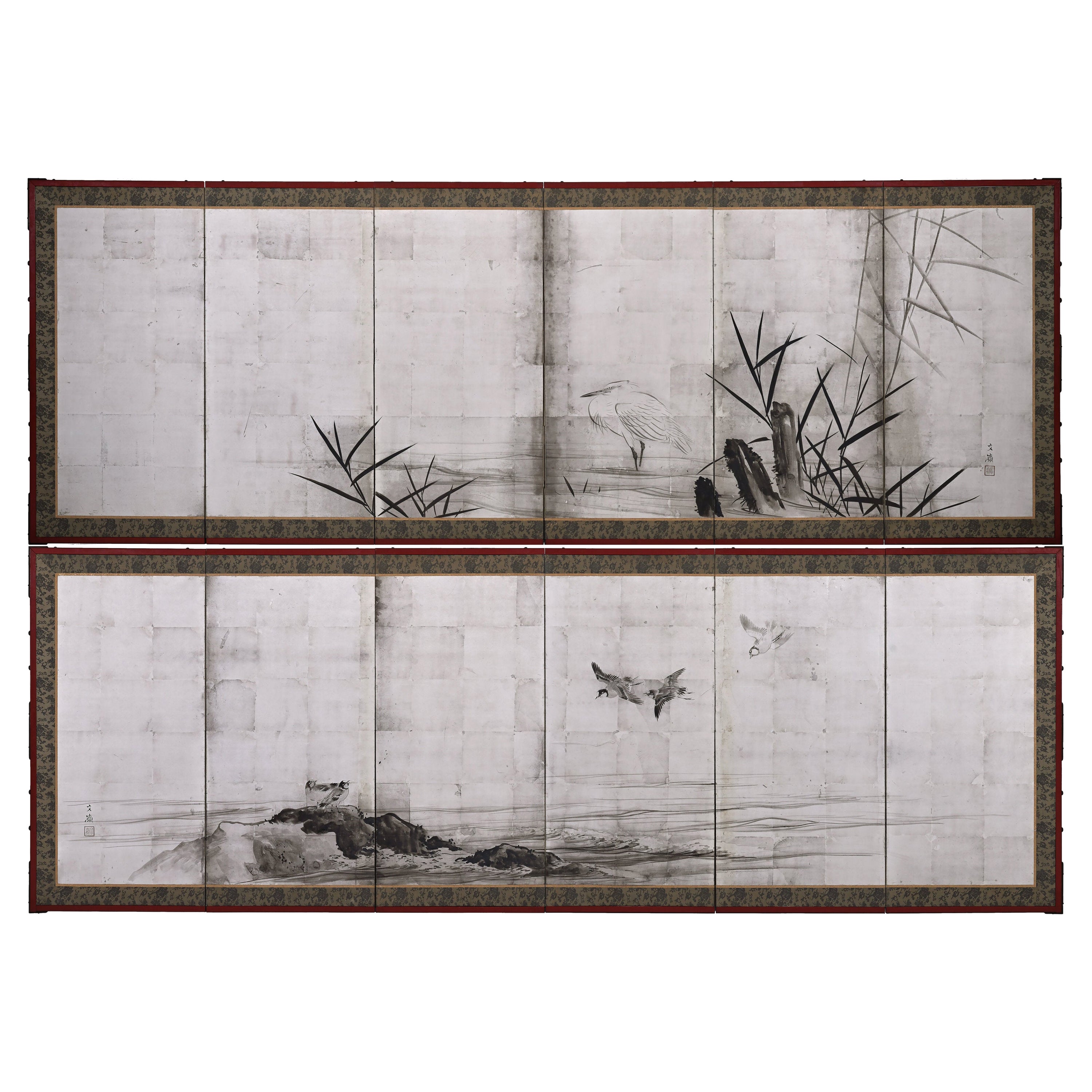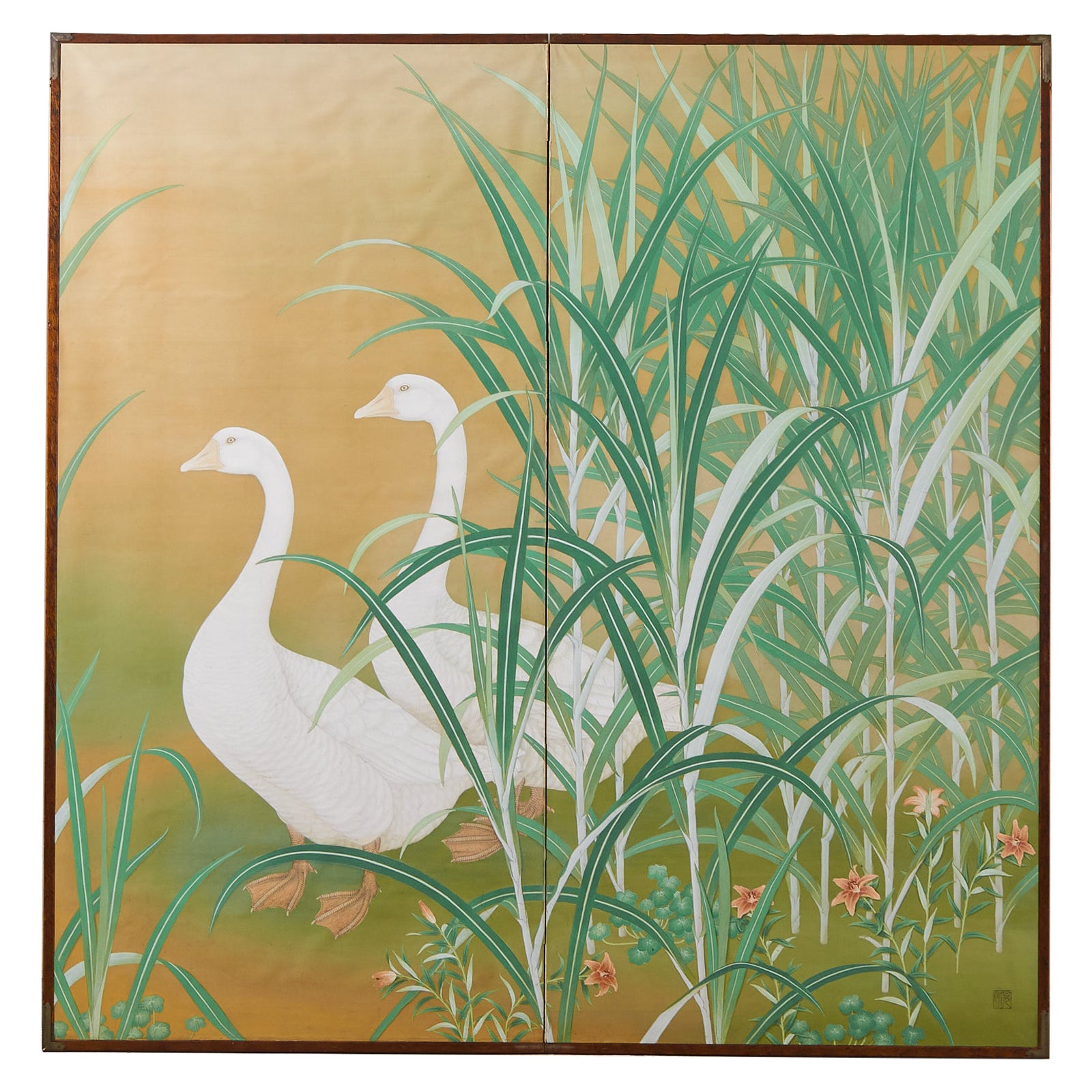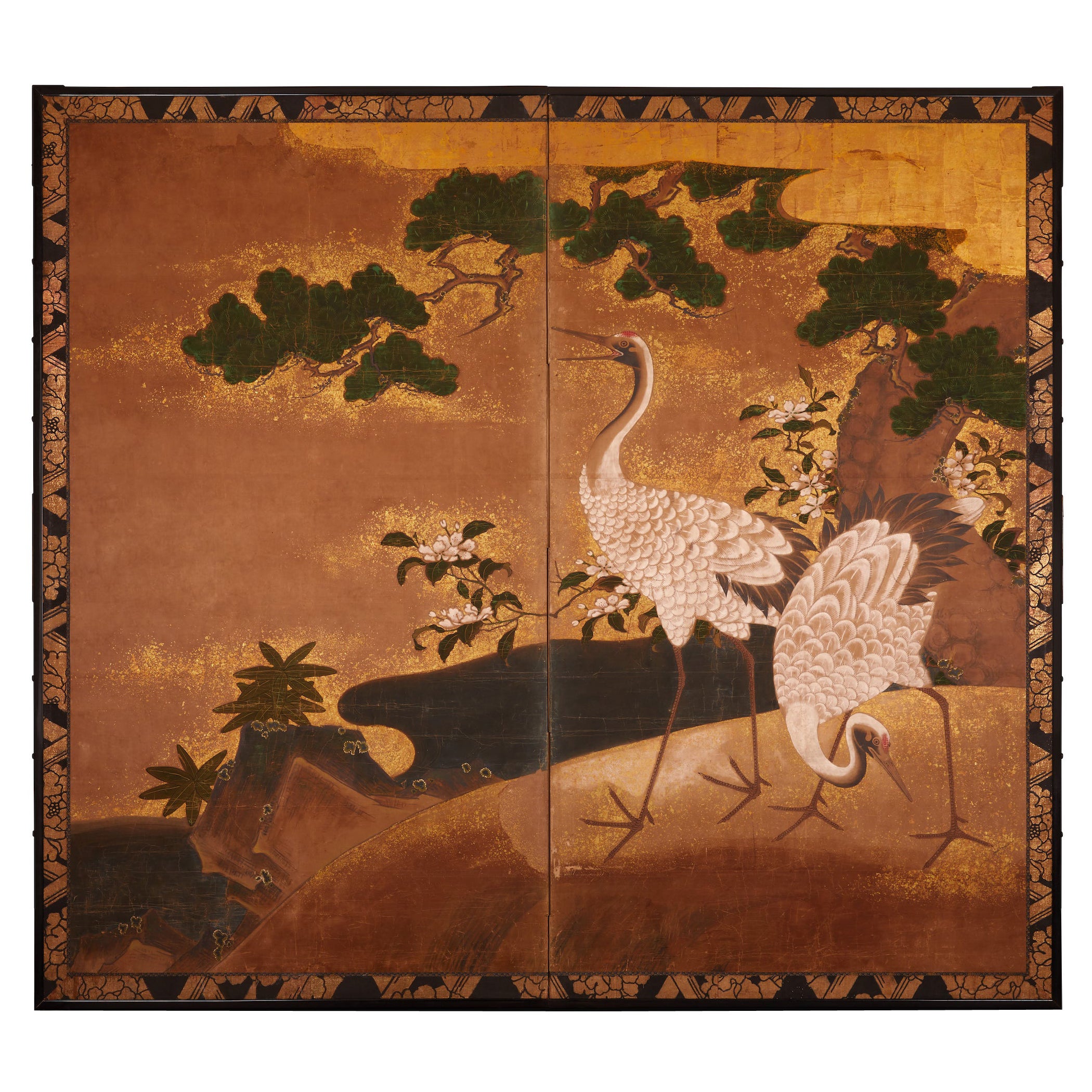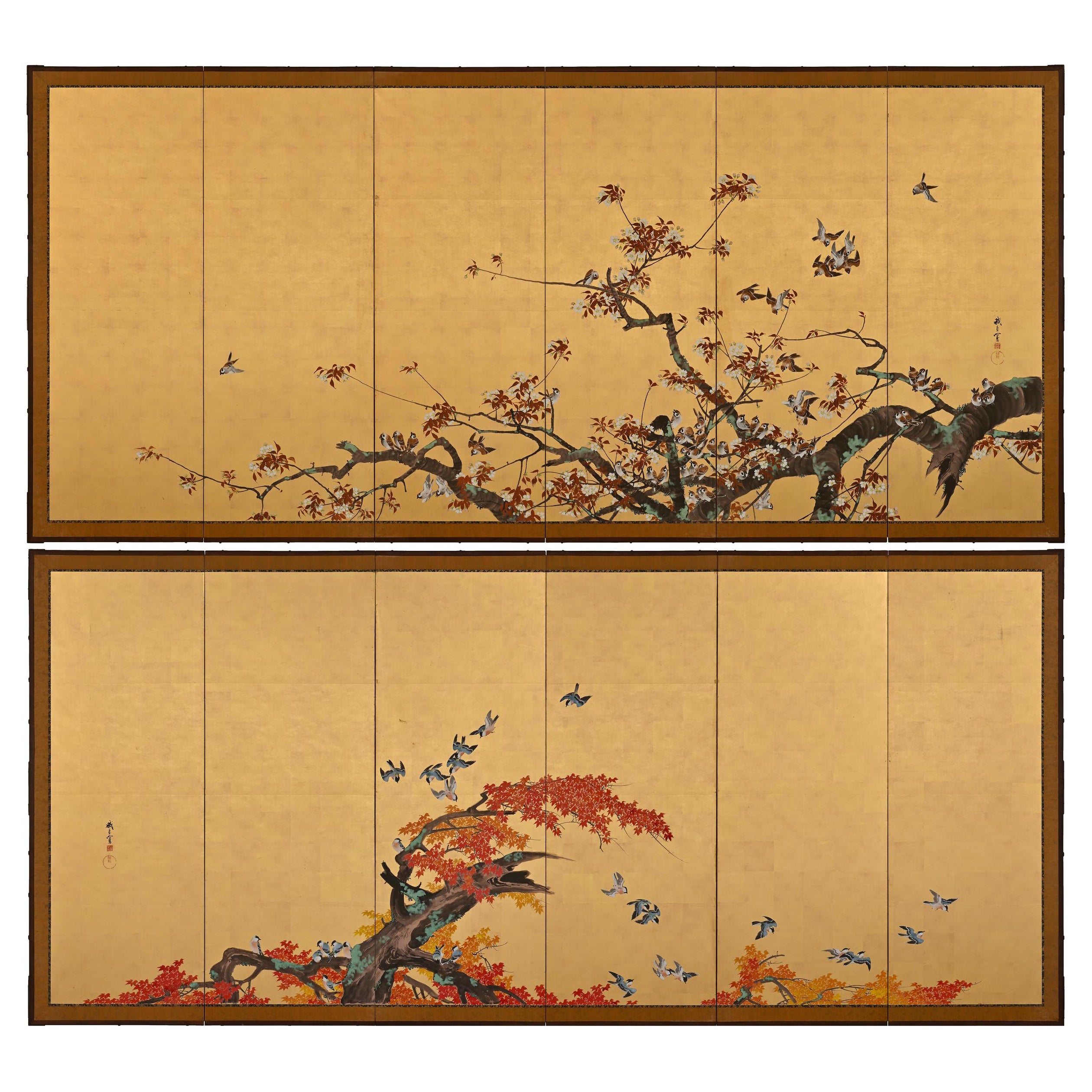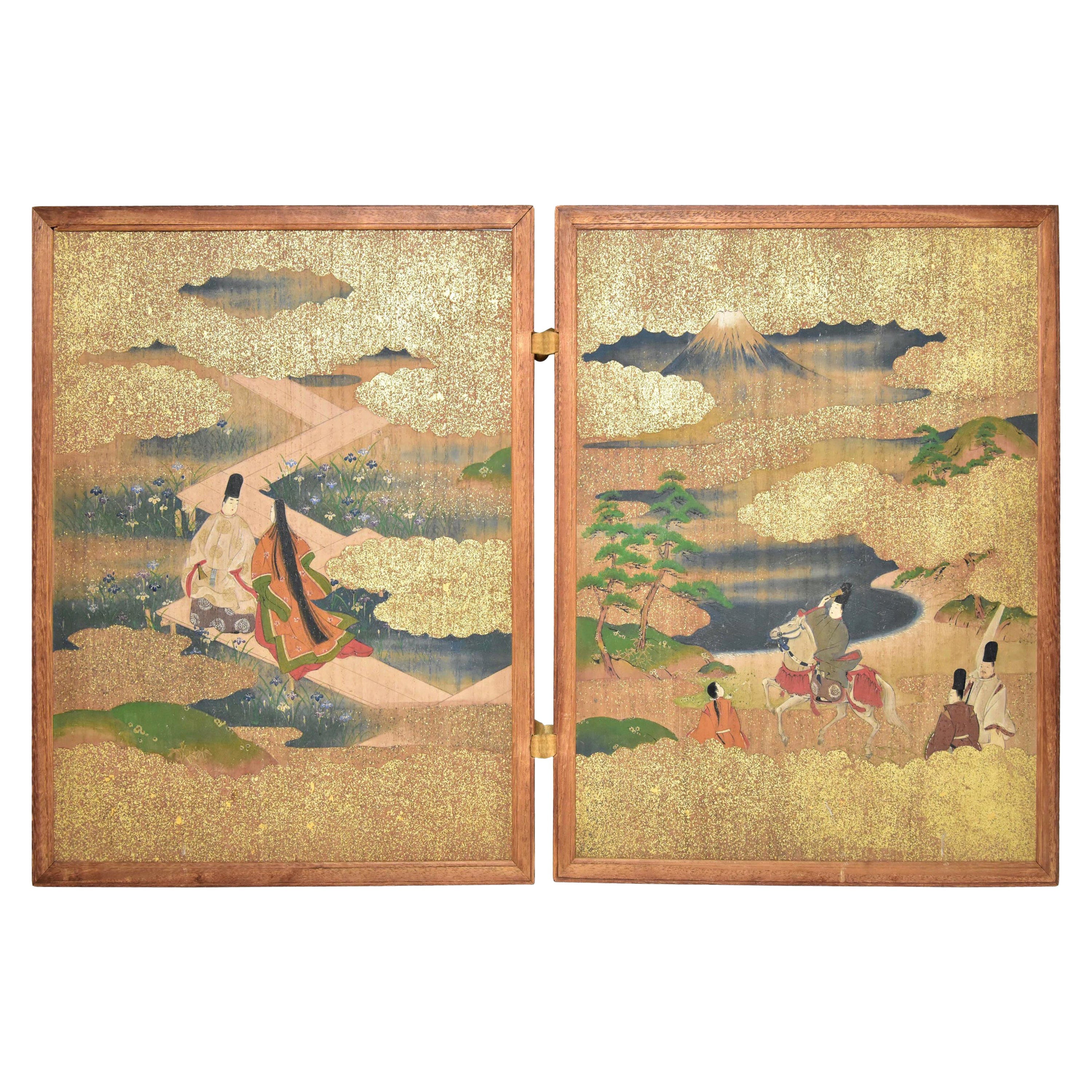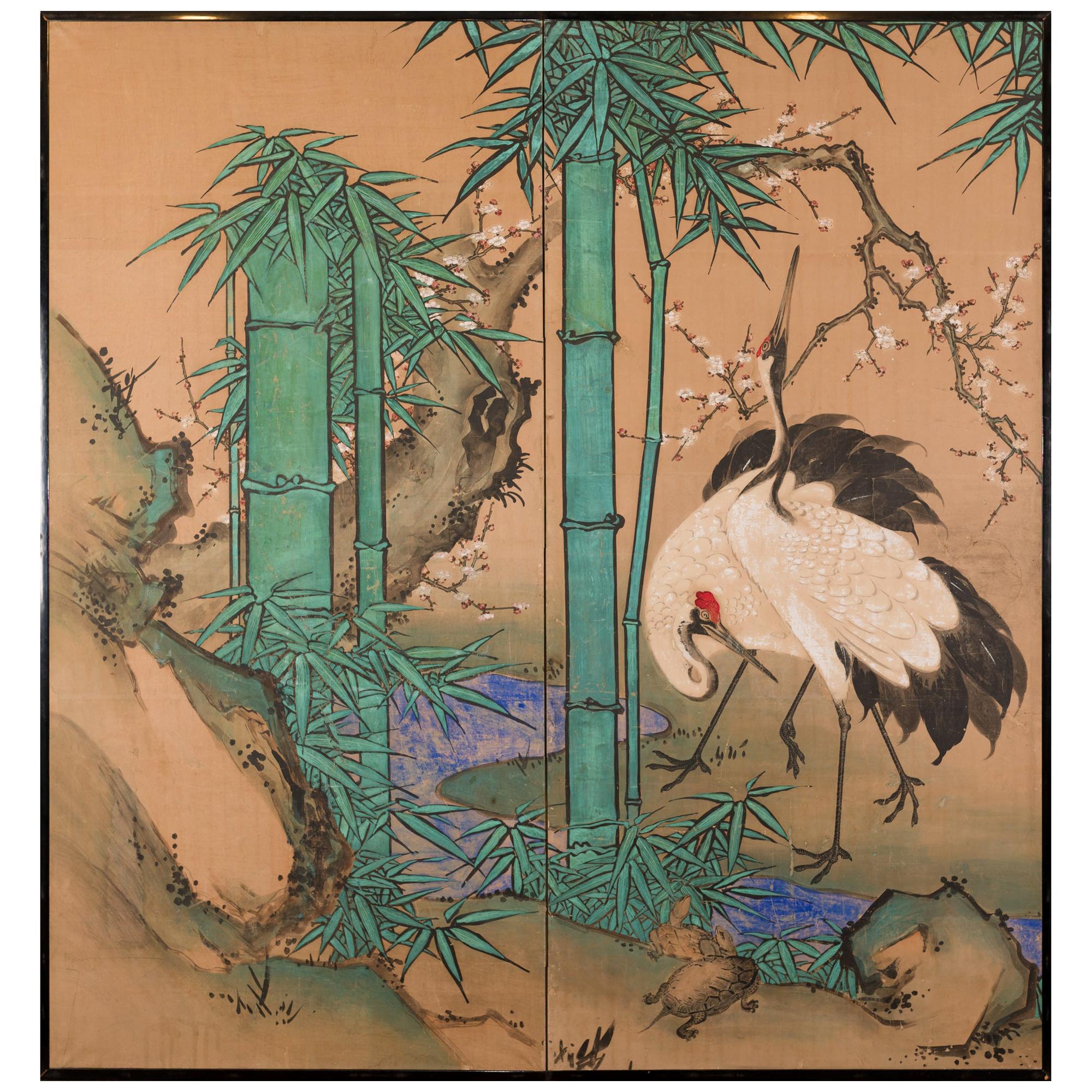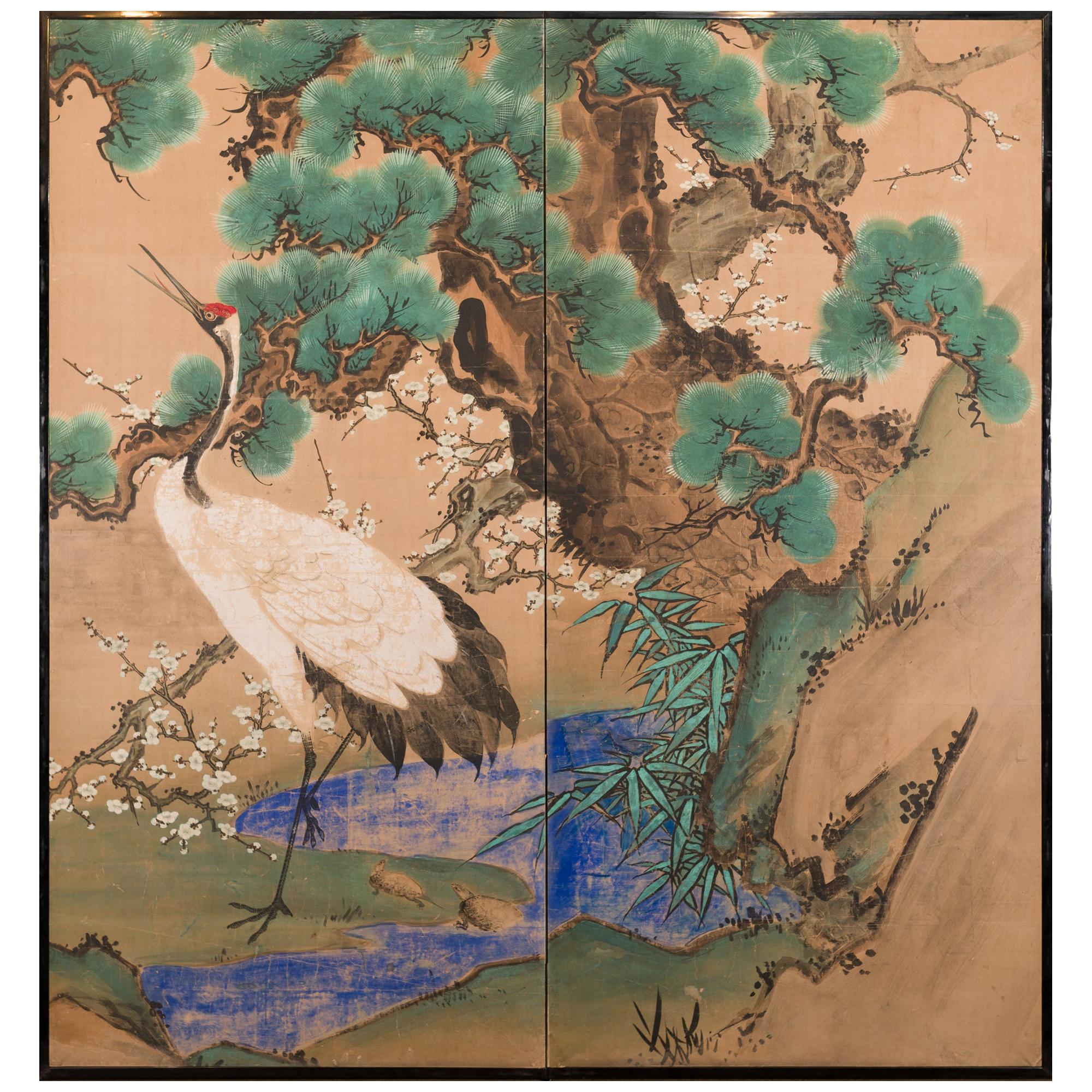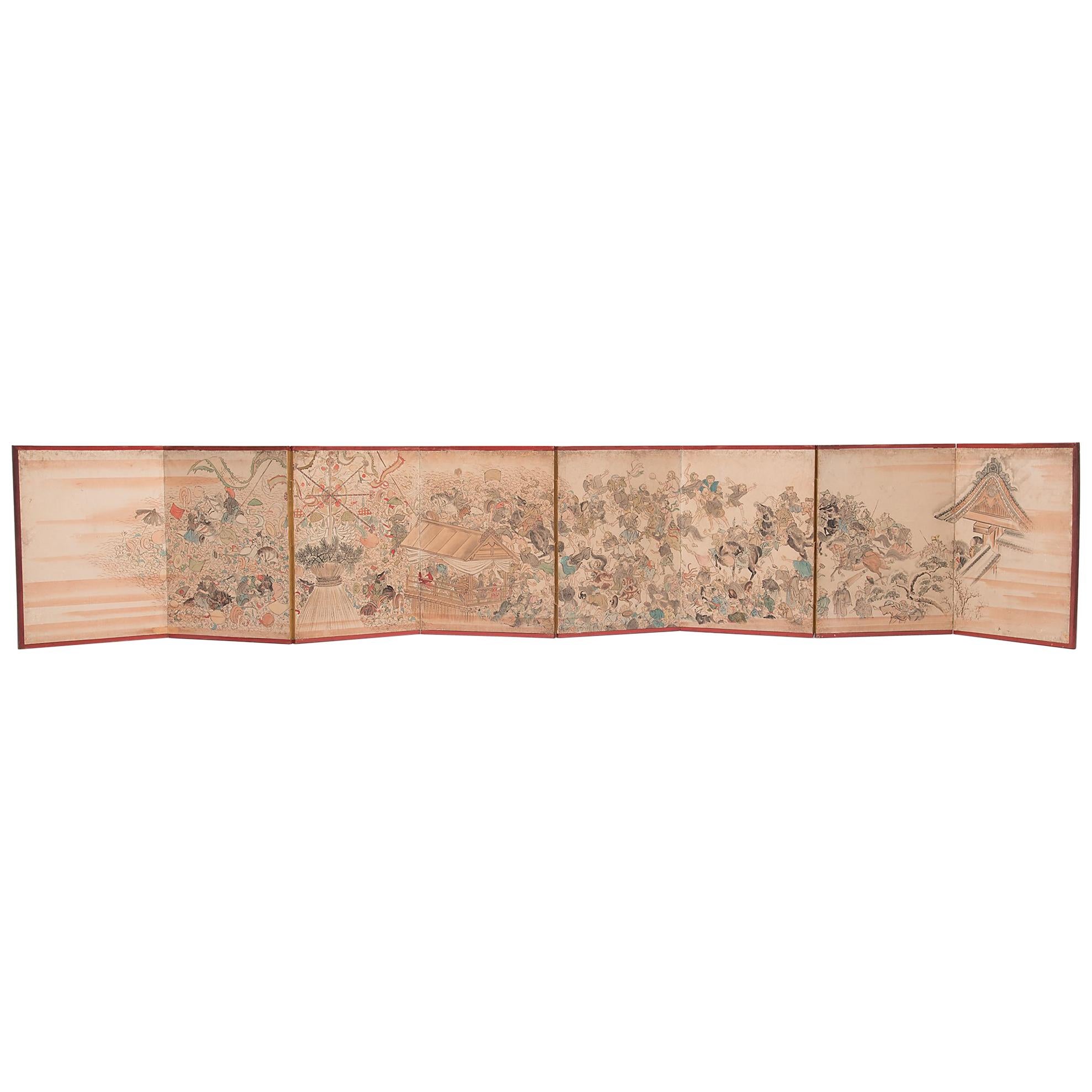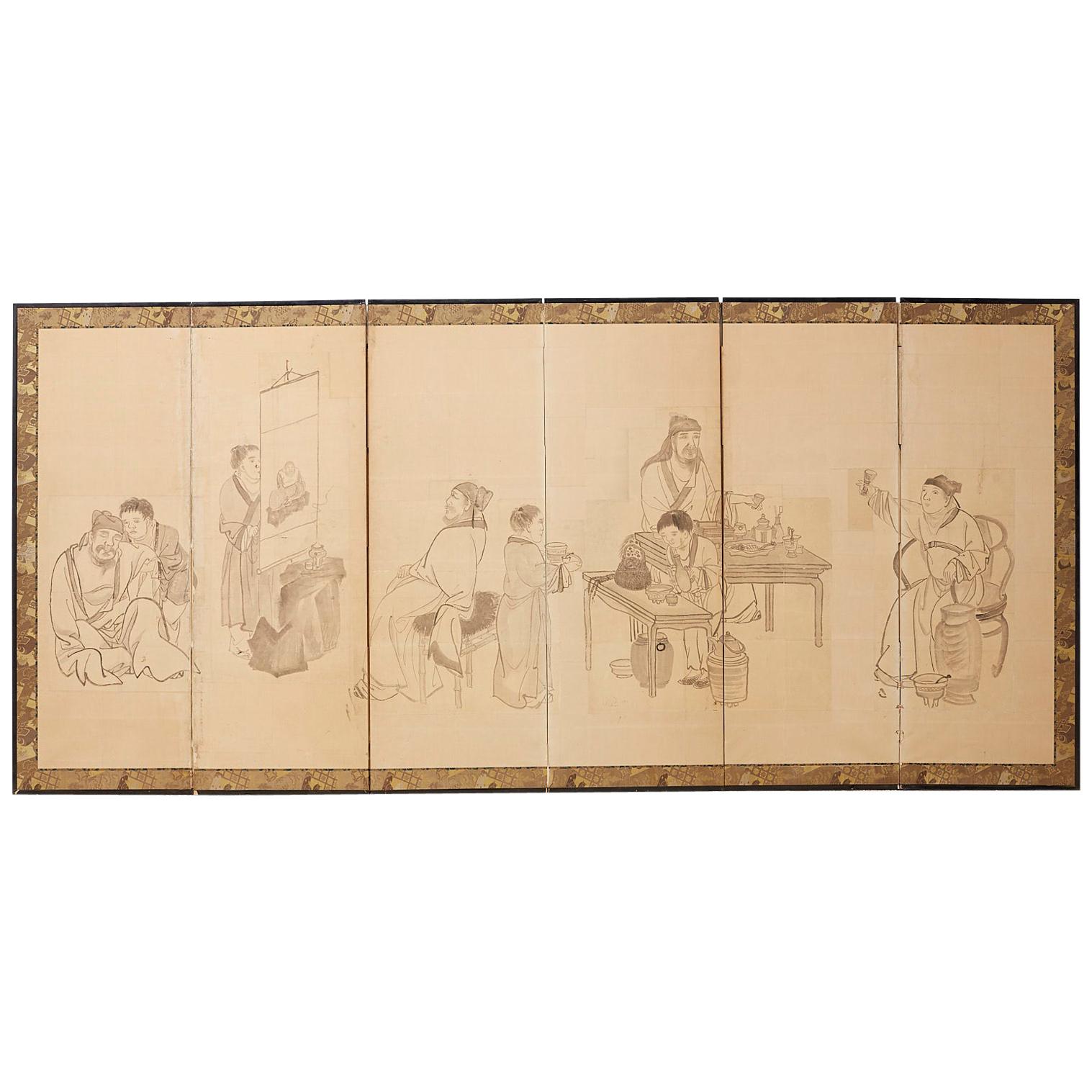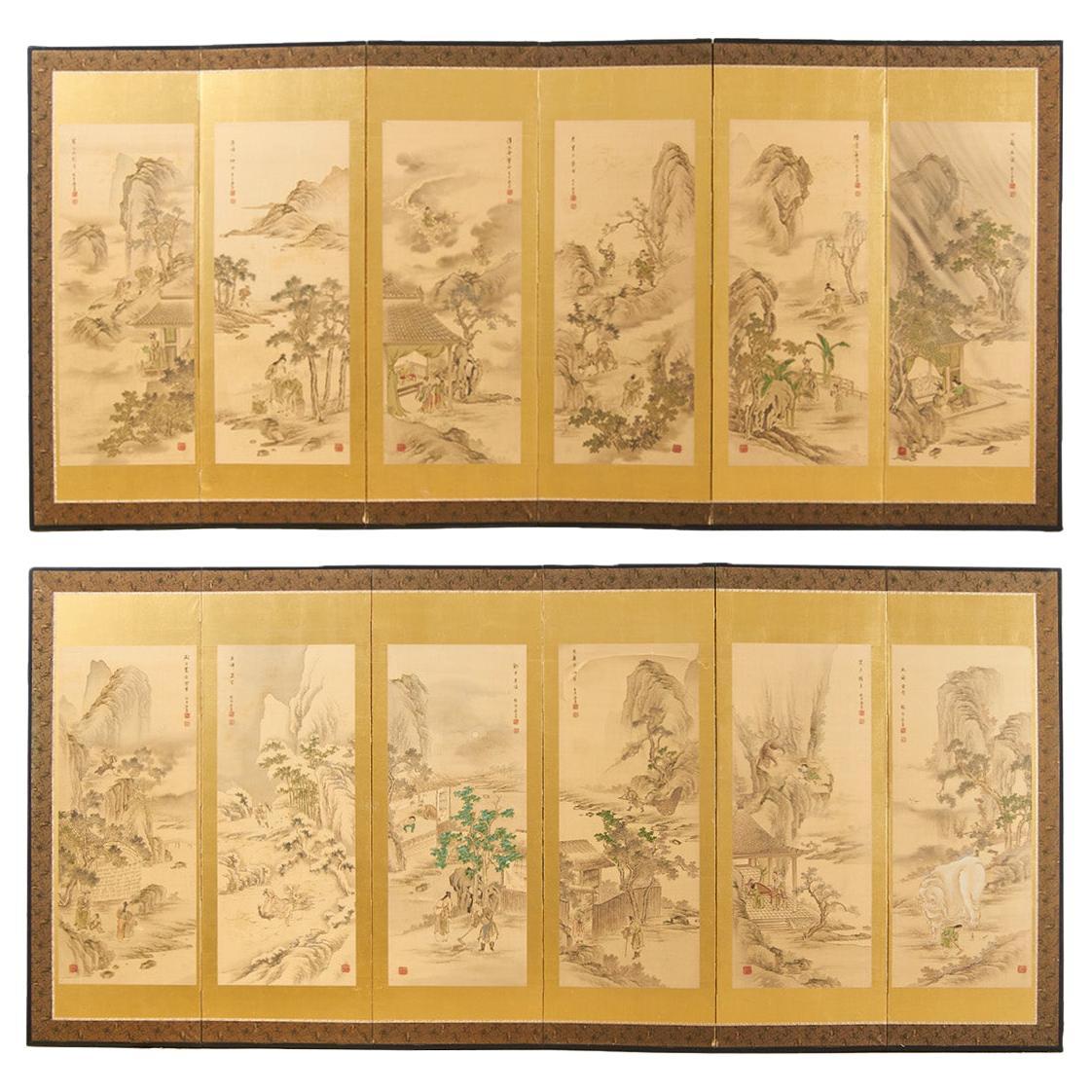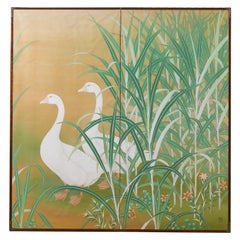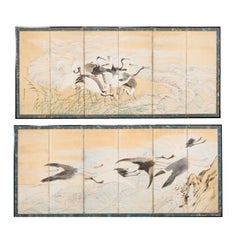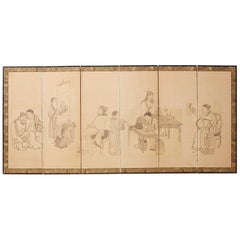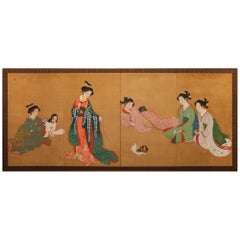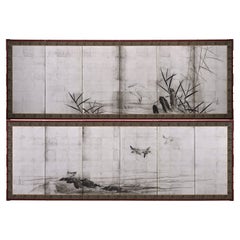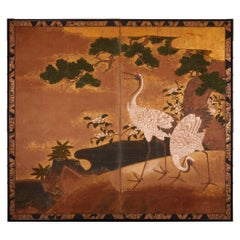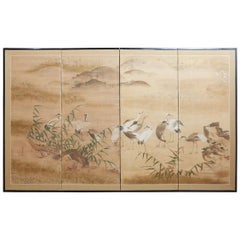
Japanese Meiji Period Screen of Red-Crowned Cranes
View Similar Items
Want more images or videos?
Request additional images or videos from the seller
1 of 17
Japanese Meiji Period Screen of Red-Crowned Cranes
About the Item
- Dimensions:Height: 60 in (152.4 cm)Width: 98 in (248.92 cm)Length: 60 in (152.4 cm)
- Style:Meiji (Of the Period)
- Materials and Techniques:
- Place of Origin:
- Period:
- Date of Manufacture:Early 20th Century
- Condition:Minor stains, foxing, and older repairs, but shows beautifully with no major losses on front.
- Seller Location:Rio Vista, CA
- Reference Number:1stDibs: LU1555212038993

About the Seller
5.0
Erin Lane Estate is based in the San Francisco Bay Area, and its team of furniture restorers, art curators, professional appraisers and Asia specialists sources prime vintage and antique furniture from the finest estates in Northern and Southern California. Erin Lane Estate specializes in Hollywood Regency, McGuire, Chinese and Japanese pieces.
Diamond Seller
Premium sellers with a 4.7+ rating and 24-hour response times
Established in 2000
1stDibs seller since 2015
2,967 sales on 1stDibs
Typical response time: 1 hour
Authenticity Guarantee
In the unlikely event there’s an issue with an item’s authenticity, contact us within 1 year for a full refund. DetailsMoney-Back Guarantee
If your item is not as described, is damaged in transit, or does not arrive, contact us within 7 days for a full refund. Details24-Hour Cancellation
You have a 24-hour grace period in which to reconsider your purchase, with no questions asked.Vetted Professional Sellers
Our world-class sellers must adhere to strict standards for service and quality, maintaining the integrity of our listings.Price-Match Guarantee
If you find that a seller listed the same item for a lower price elsewhere, we’ll match it.Trusted Global Delivery
Our best-in-class carrier network provides specialized shipping options worldwide, including custom delivery.More From This Seller
View AllJapanese Meiji Two Panel Screen Geese and Reeds
Located in Rio Vista, CA
Fantastic Japanese late Meiji period two-panel byobu screen by Hashimoto Koshu. The large screen features two white geese amid brightly colored reeds. The symbolism of geese and reeds was introduced to Japan from China in the 13th century. This was a popular subject for Japanese zen artists of the period. Beautifully crafted with exceptional brush strokes and details. Made with natural pigments in dramatic vivid colors of white, pink, and mint green on a silk background of gilt. Circa 1900 with artist seal on bottom right corner. Koshu studied Western art under...
Category
20th Century Japanese Meiji Paintings and Screens
Materials
Silk, Wood, Paper
Pair of Japanese Meiji Six Panel Screen Cranes Above Cresting Waves
Located in Rio Vista, CA
Amazing 19th century pair of large Japanese Meiji period six panel screens each depicting a sedge of Manchurian red-crowned cranes along the shore. The screens are crafted in the Nihonga school style with intricate details and beautifully depicted cresting waves. Each screen is signed by artist Hakundo Keikan and studio name of Watahiki Tokai (Japanese 1837-1915). Both screens are signed with red seals on the left and right side. Tokai was a Chinese scholar from the late Edo period and served in the Imperial Household...
Category
Antique 19th Century Japanese Meiji Paintings and Screens
Materials
Brass
Japanese Showa Six Panel Screen Manchurian Crane Bamboo Grove
Located in Rio Vista, CA
Enchanting Japanese Showa period six-panel byobu screen titled "Bamboo Forest-Immortal Together". The large screen depicts six manchurian cranes in a ...
Category
20th Century Japanese Showa Paintings and Screens
Materials
Brass
$3,600 Sale Price
20% Off
Japanese Edo Period Six Panel Screen of Chinese Scholars
Located in Rio Vista, CA
Fascinating 19th century Japanese late Edo period six pane funpon screen. Large scale depicting Chinese scholars and officials engaged in leis...
Category
Antique 19th Century Japanese Edo Paintings and Screens
Materials
Silk, Wood, Paper
Pair of Japanese Taisho Period Screens Paragons of Filial Piety
Located in Rio Vista, CA
Impressive pair of Japanese screens from the Taisho period meiji. Each six-panel screen depicts an image from the 24 paragons of filial piety ...
Category
20th Century Japanese Taisho Paintings and Screens
Materials
Brass, Gold Leaf
Japanese Taisho Two Panel Screen Heian Period Flute Player
Located in Rio Vista, CA
Extraordinary Japanese Taisho period two panel byobu screen depicting Fujiwara Yasumasa playing the flute in the Ichihara Moor. Fujiwara Yasumasa (958 to 1036) was a famous Heian period...
Category
20th Century Japanese Taisho Paintings and Screens
Materials
Wood, Paper, Silk
You May Also Like
Meiji Period Japanese Four Panel Screen Bijin At Leisure
Located in Hudson, NY
Japanese four panel screen: Bijin At Leisure. Ladies in a tea house with a small dog. Seal reads "Ensan dai" (drawn by Ensan). Meiji Period (1868 - 1912) pa...
Category
Antique Late 19th Century Japanese Meiji Paintings and Screens
Materials
Silk, Wood
Japanese Silver Screen Pair, Meiji Period, Herons & Plovers, Shijo School
Located in Kyoto, JP
Heron & Plovers
Ink and silver leaf on paper
Maekawa Bunrei (1837-1917)
A pair of low six-panel Japanese screens by Maekawa Bunrei, a later master of the Kyoto based Shijo school of painting. On the right screen a solitary white heron stands motionless in a stream. On the left screen plovers play along a shoreline. The elegant forms are executed employing fluid, minimalistic ink brushstrokes. The soft brushstrokes and the sharp light of the silver leaf lend the scenes a sense of translucence. The sophisticated composition superbly exploits the long, horizontal pictorial surface of the pair of folding screens...
Category
Antique Early 1900s Japanese Meiji Paintings and Screens
Materials
Silver Leaf
Japanese Two-Panel Screen: Cranes on Gold
Located in Hudson, NY
Early Kano School painting of pine trees overlooking two beautifully painted cranes and floral design in a natural setting by water’s edge. Mineral pig...
Category
Antique Late 18th Century Japanese Paintings and Screens
Materials
Gold, Gold Leaf
Meiji Era, Circa 1900 Japanese Screen Pair, Flowers & Birds of Spring & Autumn
Located in Kyoto, JP
Flowers & Birds of Spring and Autumn
Unknown artist.
Japan. Meiji period, circa 1900.
A pair of six-fold screens. Ink, color, gofun and gold leaf on paper.
Signed: Gaga S...
Category
Antique 1890s Japanese Meiji Paintings and Screens
Materials
Gold Leaf
Meiji Era Japanese Two Panel Hand Painted Wood Table Screen Tale of Genji
Located in Studio City, CA
A Meiji era Japanese two-panel wood screen, with illustrated images from The Tale of Genji that are exquisitely painted directly on wood with fine detail and precision, accented with scattered 24k gold leaf specks in cloud forms, rendered in the manner of Heian period...
Category
Antique 19th Century Japanese Meiji Paintings and Screens
Materials
Gold Leaf
Japanese Two Panel Screen Amorous Cranes and Turtles
Located in Hudson, NY
Japanese two panel screen: Amorous Cranes and Turtles. In Japan, cranes symbolize fidelity as they mate for life and turtles symbolize longevity. Additionally, this screen also has the Japanese motif of sho-chiku-bai, or the three friends of winter (pine, plum, and bamboo). So called the three friends of winter because all three flourish during the cold months. This screen was originally fusuma doors...
Category
Antique 1850s Japanese Edo Paintings and Screens
Materials
Wood, Paper
Recently Viewed
View AllMore Ways To Browse
Asian Crane Panel Art
Japanese Crane Panel
Crown Crane
Crowned Crane
Japanese Crane Screen
Japanese Screens With Cranes
Gold Leaf Cranes
Red Crowned Crane
Gold Screen Crane
Meiji Four Panel Screen
Crane Paintings Gold Leaf
Asian Gold Leaf Panels With Cranes
Japanese Wood Panel
Asian Screens And Panels
19th Century Japanese Paintings
Used Silk Screens
Antique Silk Paintings
Japanese Painted Screen

